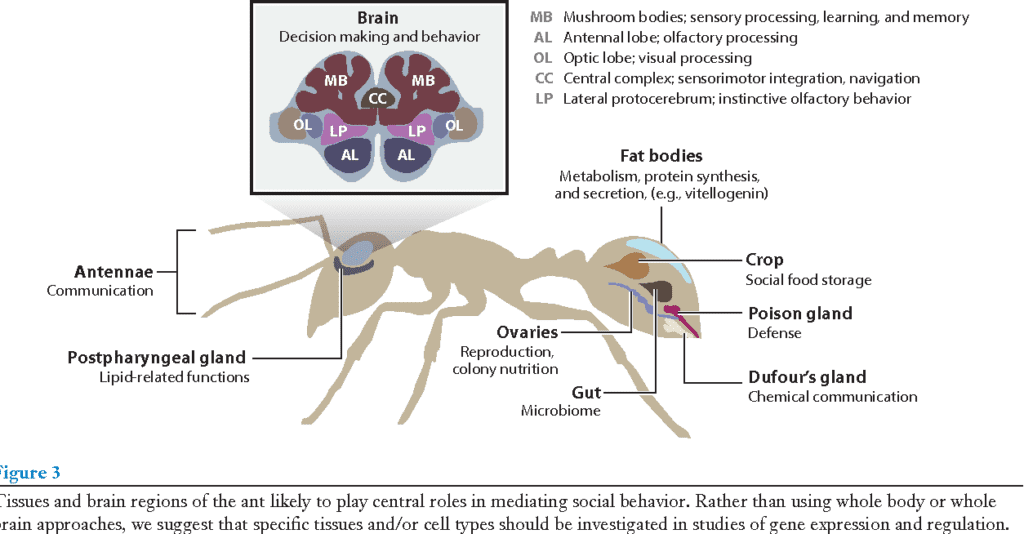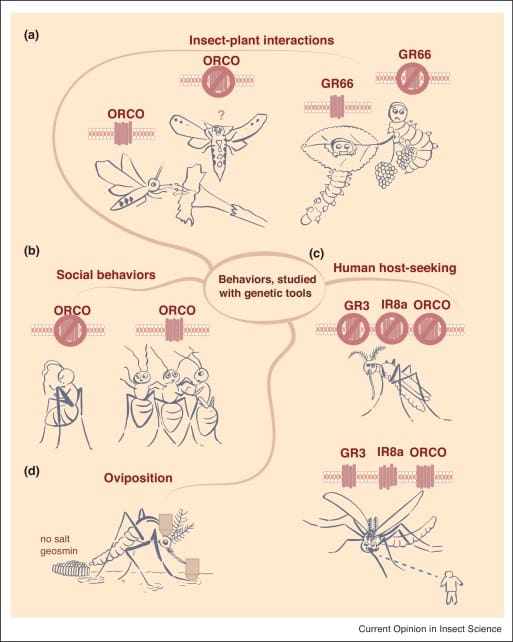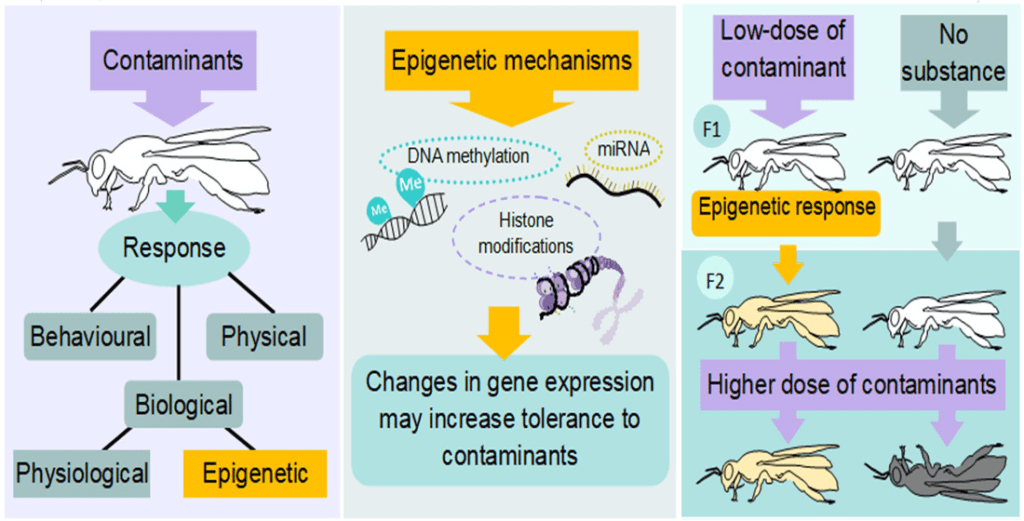In the fascinating world of pest behavior, genetics play a vital role that often goes overlooked. This article will shed light on the intricate connection between genetics and the behaviors of pests that invade our homes and gardens. Delving into the underlying genetic factors that contribute to their behavior, we will unveil the remarkable ways in which these tiny creatures are wired. From the ability to adapt to different environments to their relentless search for food and reproduction, genetics shape the very essence of what makes pests, well, pests. So join us on this enlightening journey as we uncover the secrets hidden within the genomes of these tiny troublemakers.

Section 1: Introduction to Genetics and Pest Behavior
Understanding Genetics
Genetics is the branch of biology that explores the inheritance and variation of traits in living organisms. It plays a crucial role in determining the characteristics of plants, animals, and humans. In the context of pest behavior, genetics refers to the role that genes and genetic factors play in shaping the behavior and traits of pests, such as insects, rodents, and agricultural nuisances. By studying genetics, we can gain valuable insights into the underlying mechanisms that influence pest behavior, paving the way for more effective pest control strategies.
Defining Pest Behavior
Pest behavior refers to the actions and activities exhibited by organisms that are considered pests due to their negative impacts on human health, agriculture, and the environment. Pests can encompass a wide range of species, including insects, rodents, weeds, and plant pathogens. Understanding and predicting their behavior is crucial in developing targeted and sustainable pest management strategies. While various environmental factors influence pest behavior, genetics also plays a significant role in determining how pests interact with their environment and adapt to control measures.
Section 2: Genetic Factors Influencing Pest Behavior
Genetic Predisposition
Genetic predisposition refers to an organism’s inherent susceptibility or propensity to exhibit certain behaviors or traits. In the case of pests, genetic predisposition can influence their preference for specific food sources, nesting habits, or resistance to certain control measures. For example, some species of mosquitoes may have a genetic predisposition to be more attracted to human scent, leading to a higher likelihood of disease transmission. By understanding these genetic predispositions, pest control professionals can develop more targeted strategies to disrupt or deter pests.
Genetic Adaptation
Genetic adaptation is the process by which pests evolve and develop traits that enhance their survival and reproductive success in response to environmental pressures. This adaptation can occur over generations and can lead to changes in behavior, physiology, and morphology. For instance, certain strains of bed bugs have developed resistance to common pesticides through genetic adaptations, rendering traditional control methods less effective. Understanding the genetic basis of such adaptations allows pest control experts to develop novel and targeted approaches to combat resistant pests.
Crossbreeding and Hybridization
Crossbreeding and hybridization, the interbreeding of different species or populations, can introduce new genetic variations into pest populations. This can result in hybrid pests that exhibit different behaviors or characteristics than their parent species. For example, when two genetically distinct populations of insects mate, the resulting hybrid offspring may possess a combination of traits from each parent, potentially affecting their behavior. Understanding the outcomes of crossbreeding can inform pest control strategies by predicting and targeting potential changes in pest behavior.
Mutations and Genetic Variation
Mutations are spontaneous changes in genetic material that can lead to new traits or variations within a population. Genetic variation is essential for adaptation and evolution to occur. The presence of diverse genetic variants within a pest population can impact their behavior in various ways. Certain mutations may confer resistance to control measures, alter reproductive strategies, or affect sensory perception. By studying the genetic variation in pest populations, researchers can gain insights into potential vulnerabilities and develop more precise pest control strategies.

Section 3: Genetic Mechanisms of Pest Behavior
Inheritance Patterns
Inheritance patterns determine how genetic traits are passed from parents to offspring. Understanding inheritance patterns is crucial in predicting and manipulating pest behavior. Some traits may be governed by single genes, following simple Mendelian inheritance, while others may be influenced by multiple genes, exhibiting complex inheritance patterns. By studying these patterns, scientists can identify the genetic basis of particular behaviors and develop strategies to disrupt or modify them.
Genes and Hormonal Control
Genes play a vital role in regulating hormonal processes in pests, which in turn influence their behavior. Hormones act as chemical messengers, controlling various physiological processes and behaviors. For example, certain genes may regulate the production of pheromones in insects, affecting their mating behavior or communication with others. Understanding the genetic control of hormonal processes allows researchers to manipulate pest behavior through hormone-based strategies or disrupt mating patterns to control population growth.
Genetic Influence on Sensory Perception
Pests rely on their sensory systems to navigate their environment and locate food, mates, or suitable habitats. Genetic factors can significantly influence the sensory perception of pests, affecting their ability to detect and respond to environmental cues. For instance, certain genes may encode receptors responsible for detecting specific odors, enabling pests to locate food sources or avoid potential threats. By studying the genetic basis of sensory perception, researchers can target specific genes to interfere with pests’ ability to locate resources or communicate, effectively managing their behavior.
Genetic Basis of Reproductive Strategies
Reproductive strategies in pests can be influenced by genetic factors, determining their mating patterns, fertility, or reproductive success. Genetic factors can influence the timing of reproduction, the number of offspring produced, or even the method of reproduction (such as sexual or asexual). By understanding the genetic basis of reproductive strategies, researchers can develop control measures that disrupt or manipulate pests’ ability to reproduce, effectively managing their population growth.

Section 4: Case Studies on Genetic Influences in Pest Behavior
Malaria Mosquitoes and Insecticide Resistance
Malaria mosquitoes, such as the Anopheles genus, have developed genetic mechanisms to resist commonly used insecticides like pyrethroids. Genetic mutations in specific genes involved in nerve cell function and detoxification enzymes have led to reduced sensitivity to these insecticides. By understanding the genetic basis of insecticide resistance, researchers can develop alternative control methods or target specific genes to combat resistant mosquito populations, safeguarding public health.
Bed Bugs and Their Ability to Withstand Pesticides
Certain strains of bed bugs, such as the Cimex lectularius species, have developed genetic adaptations that allow them to withstand common pesticides like pyrethroids. These adaptations involve changes in specific target sites that the pesticides act upon, rendering them less effective. By studying the genetic mechanisms behind pesticide resistance, researchers can develop novel control strategies or target alternative vulnerabilities of these resilient pests.
Agricultural Pests and Genetic Adaptation to Crops
Many agricultural pests have evolved genetic adaptations to specific crops, enabling them to overcome natural defenses and exploit these resources. For example, some strains of the diamondback moth developed resistance to the toxin produced by genetically modified (GM) crops, designed to control them. By studying the genetic adaptations of pests to crops, researchers can develop strategies to minimize crop damage and enhance pest control in agriculture.
Rodents and Genetic Factors Affecting Nesting Behavior
Genetics can influence the nesting behavior of rodents, such as mice and rats. Certain genes may determine the preference for specific nesting sites, the construction of nests, or even the likelihood of social behavior. By understanding the genetic factors that govern rodent nesting behavior, pest control professionals can develop strategies to deter rodents from nesting in unwanted areas or disrupt their social structures, effectively managing their populations.

Section 5: Applications of Genetic Understanding in Pest Control
Genetic Pest Management Strategies
The understanding of genetics in pest behavior opens up new opportunities for genetic pest management strategies. This approach involves manipulating the genetic makeup of pest populations to reduce their reproductive success or disrupt specific behaviors. For example, scientists are exploring the use of genetically modified mosquitoes that carry genes that inhibit their ability to transmit diseases like malaria or dengue fever. These modified mosquitoes could be released into the wild to mate with wild populations, passing on the genes that reduce disease transmission, effectively reducing the pest population and disease prevalence.
Targeting Specific Genetic Traits
By identifying and targeting specific genetic traits associated with pest behavior, researchers can develop more efficient and precise control methods. For instance, if a specific gene is responsible for the production of a pheromone that attracts pests to a certain area, efforts can be made to disrupt or manipulate this gene to repel pests. Understanding the genetic basis of such traits allows for the development of novel control strategies that focus on interfering with specific genetic mechanisms.
Genetically Engineered Pest Control Solutions
Advances in genetics and biotechnology have led to the development of genetically engineered pest control solutions. Through techniques like gene editing, scientists can modify the genetic makeup of pests to render them less harmful or more susceptible to control measures. For example, genetically modified crops have been engineered to produce toxins that specifically target pests, reducing the need for chemical insecticides. Genetic engineering opens up a range of possibilities for more sustainable and eco-friendly pest control solutions.
Future Prospects and Ethical Considerations
As our understanding of genetics and its role in pest behavior continues to grow, so does the potential for more effective and targeted pest control strategies. However, it is crucial to consider the ethical implications of genetic pest management. Careful assessment of potential ecological impacts, unintended consequences, and public acceptance is necessary to ensure the responsible and ethical application of genetic technologies in pest control.

Section 6: Conclusion
Genetics plays a significant role in shaping the behavior of pests, providing insights into their predispositions, adaptations, and mechanisms of behavior. By studying the genetic factors influencing pest behavior, researchers and pest control professionals can develop more targeted and sustainable pest management strategies. From understanding inheritance patterns to manipulating specific genetic traits and exploring genetically engineered solutions, genetics offers innovative approaches to effectively control pests while minimizing environmental impacts. The future of pest control lies in harnessing the power of genetics to create innovative solutions for a world with ever-evolving pest challenges.

I am Randy, the author behind PestControld.com. Drawing from decades of experience, I aim to provide valuable insights, expert advice, and practical recommendations to help you make informed decisions when assessing viable pest control solutions.